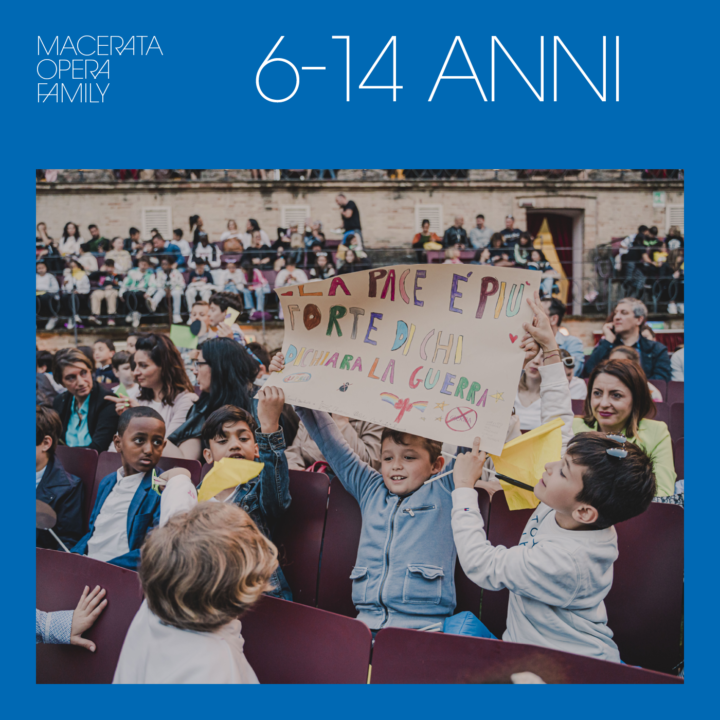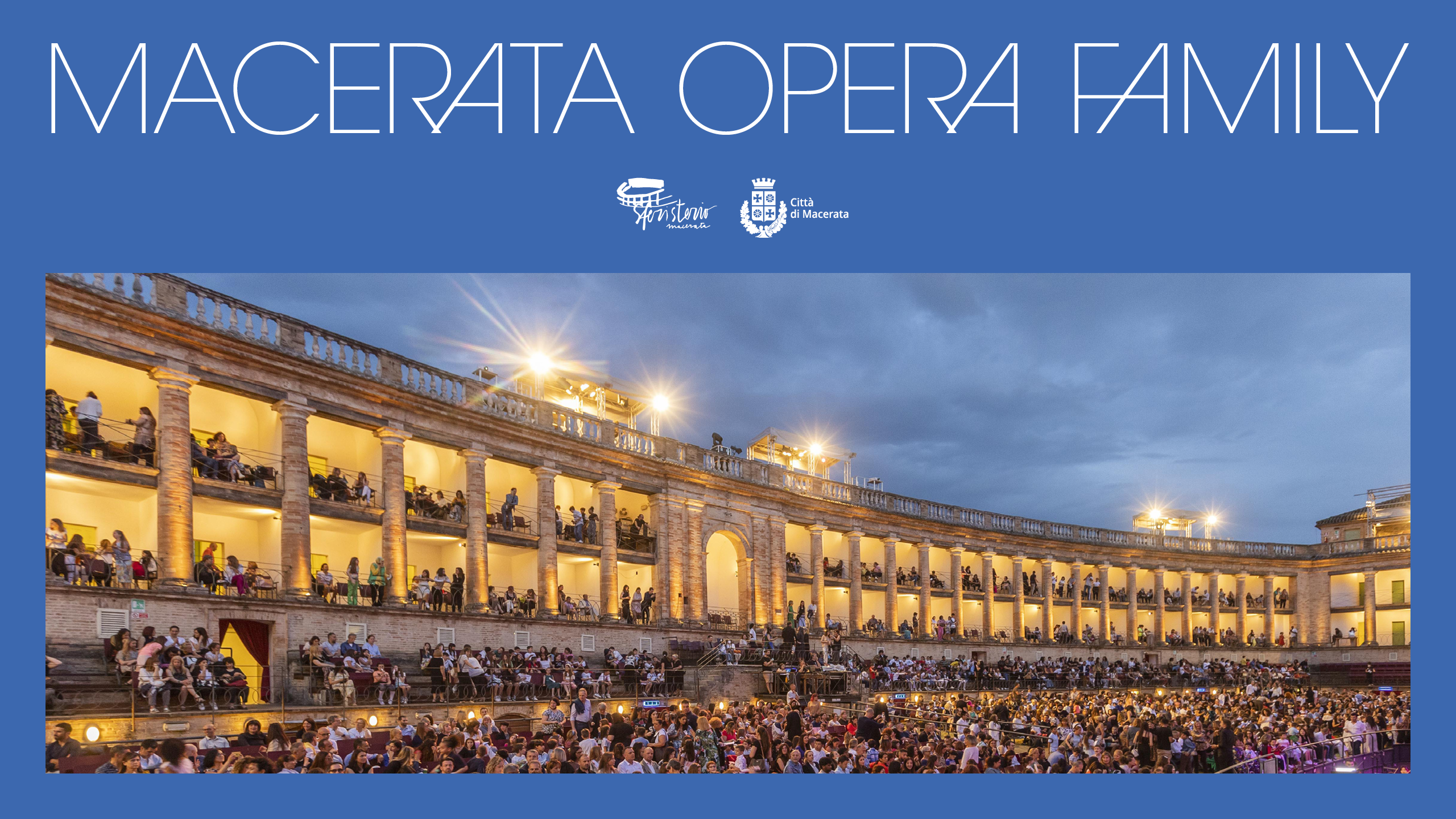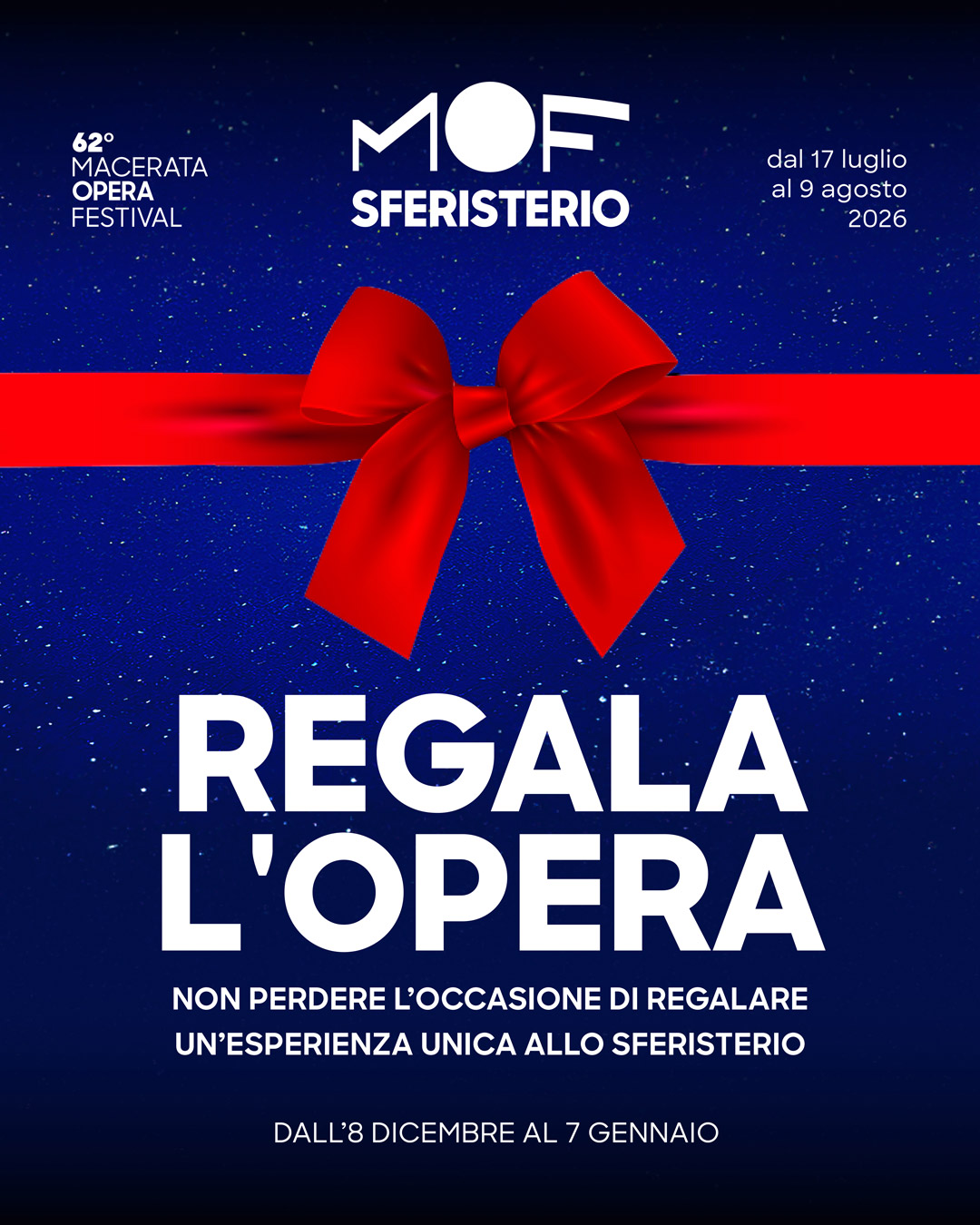PRIMARY AND LOWER SECONDARY SCHOOL STUDENTS

From 6 to 14 years
4 to 8 June, 8.45 p.m.
Arena Sferisterio
Turandot. Enigmi al museo
from Turandot by Giacomo Puccini
Musical reworking Enrico Minaglia
Dramaturgical adaptation Andrea Bernard
Casa Ricordi Srl, Milano.
First performance: Como, Teatro Sociale, 14 February 2024
Conductor Sieva Borzak
Director Andrea Bernard
Scenes Alberto Beltrame
Costumes Elena Beccaro
Choreography Giulia Tornarolli
Assistant director Tecla Gucci Ludolf
Assistant choreography Giulia Turconi
Assistant costumes Emilia Zagnoli
La Principessa Turandot Marianna Iencarelli, Ilaria Sicignano, Nina Zazyiants
Calaf Davide Battiniello, Vincenzo Spinelli, Yuxuan Wang
Timur Andrea Carcassi, Baopeng Wang
Liù Aloisia De Nardis, Suji Kwon
Ping/Un visitatore Junhyeok Park
Pang Gerardo Dell’affetto, Junsang Do
Pong Yiying Guo, Edoardo Manzardo
Un boia Thomas Angarola
La guida del museo Simone Ruvolo
Una guardia imperiale Rosa Maria Rizzi
Orchestra 1813
AsLiCo Production
In co-production with Opéra Grand Avignon and Opéra de Rouen Normandie and under the patronage of the Puccini Celebrations Promotion Committee and ICOM International Council of Museums
New production Opera tomorrow XXVIII edition
For further information and to join, please write to education@sferisterio.it or contact Paola Pierucci on + 39 0733 261334
Turandot will lead young audiences to discover a magical and grandiose China, where – amidst riddles, eastern princes, the gong of destiny, executioners, and splendid imperial palaces – the story of Turandot, the princess with a heart of ice, unfolds. Director Andrea Bernard sets the story in a museum. Here, the young Calaf, with his father Timur and Liù, is one of the visitors and the mysterious world of Turandot is presented through statues, precious ceramics, traditional costumes, and vintage prints. The reading of an ancient manuscript brings to life the museum’s artworks and visitors are then immersed into the riddles of Princess Turandot. With the help of Ping, Pong, and Pang, – three statues from the terracotta army – the princess fights to find true love and be remembered forever.
PART I
Calaf, his father Timur, and her friend Liù are visiting a museum. The Chinese section of the museum is hosting an exhibition about Princess Turandot and the crates of artworks are ready to be opened. The Mandarin, an expert guide at the museum, gives the visitors a preview of the ancient law of Beijing written on a scroll kept in a showcase: only those who can answer Turandot’s riddles can marry her. These riddles present a challenge of intellect and wisdom to those who seek to win Turandot’s heart. However, they are also highly dangerous: those who fail shall be beheaded. The reading of this scroll brings the museum and the exhibited artworks to life. The mysterious world of Turandot emerges from the crates, transporting Calaf, his father, and Liù into a wonderful adventure. Turandot, the beautiful princess with a heart of ice, is depicted in a large and precious painting that is carefully preserved in the museum. When Calaf sees Turandot’s portrait, he falls in love immediately. So, he decides to risk his life and tries to answer the riddles. Ping, Pang, and Pong – three statues from the terracotta army and faithful protectors of the princess – try to dissuade the young lover, thus becoming his companions in this adventure. Calaf remains strong and does not waver: he rings the magical gong and takes on the challenge.
PART II
Ping, Pang, and Pong are alone. They dream of being real men and no longer in the service of the princess. They want to live their lives in their homes among lakes and bamboo forests. The gong sounds and Turandot appears before the visitors after a grand dancing parade. She challenges Calaf, who is ready to answer Turandot’s three riddles. The riddles are difficult, but he is determined to win Turandot’s love and he answers all of them. Turandot is incredulous and frightened: she does not want to yield and marry him. Calaf then poses a riddle for Turandot that could change their destiny: if Turandot guesses his name by dawn, he will give up the marriage and kill himself.
PART III
In the silence of the night, Calaf dreams of his future by the light of magical flying lanterns. Meanwhile, Liù is determined to protect Calaf’s secret at all costs. When she is forced to reveal Calaf’s name, she chooses to sacrifice herself rather than betray him. Thus, she transforms into a porcelain statue, demonstrating her loyalty and devotion to her friend. Turandot is moved by Liù’s audacity and love. Her heart of ice “melts” and she accepts to marry Calaf. Through the experience of love, the princess accepts her own humanity and opens herself to the feelings she has long suppressed. Finally, Calaf and Turandot come together in the name of love, merging into a painting that symbolizes hope and eternal connection. This image leaves an unforgettable impression on the souls of future museum visitors, embodying the enduring power of love and the transcendent nature of their union.
Turandot is a tale rich in mysteries and captivating moments that transports the audience into a magical and majestic China. Riddles, oriental princes, the resounding gong of destiny, executioners, and imperial palaces all weave together to narrate the story of the Princess with a heart of ice. I chose to stage this tale within the halls of a museum, where the enchanting world of Turandot springs to life through statues, vases, traditional costumes, and ancient prints. Calaf, a young visitor, is fascinated by the portrait of the princess, which is carefully preserved in a crate and ready to be exhibited. As the museum guide reads the laws of Beijing from an old manuscript, the story takes shape. Calaf, along with his father and Liù, is suddenly transported into the enigmatic world of Turandot, where the princess longs for true love to set her free and be remembered forever. The opera unfolds entirely within the evocative setting of the museum, where crates containing precious artworks shift and open, revealing the diverse and vibrant universe of Turandot. Each scene undergoes a metamorphosis, generating a plethora of visual effects. The meticulously designed sets and costumes play a key role in transporting Calaf and the audience into the magical world of ancient and distant China. Lanterns, opulent headpieces, majestic parade dragons, crafted masks, delicate rice paper umbrellas, and flowing hanfu dresses in vivid colors imbue the atmosphere with an air of exotic splendor. Throughout the opera, Calaf, with the help of Ping, Pong, and Pang, three statues from the terracotta army, endeavors to unlock the three riddles and win Turandot’s heart. These riddles present a challenge of intellect, wisdom, and emotional understanding to those who seek to win Turandot’s heart, emphasizing the importance of going beyond superficial appearances and delving into the depths of human emotions. Through the riddles, the protagonist shows his ability to grasp the true essence of love, compassion, and redemption. The fate of Liù, Calaf’s faithful friend, has a special significance in the story. To safeguard Calaf’s identity, Liù makes the ultimate sacrifice, transforming into a porcelain statue – a timeless symbol of unwavering loyalty and devotion. The finale of our production culminates in a remarkable epilogue: Turandot finally accepts Calaf’s love, and the two lovers merge into the same painting. This symbol of eternal union and immortality represents the triumph of emotions over the icy armor of the princess and the external world. The museum setting imbues Turandot with a newfound dimension, where past and present seamlessly converge, guiding the audience on an immersive journey of emotions, beauty, and introspection. It stands as a potent symbol – a space that transcends its seemingly static nature, transforming into a vibrant canvas of beauty and dynamic storytelling.
While listening and studying Turandot, I appreciated and admired the richly developed setting. Right from the opening notes, Puccini transports us into an exotic, fantastic, and ancient world. Puccini’s genius, which was evident even in his earlier works, comes into focus in his final opera, albeit unfinished. Our production may be condensed, but it does not lack the most enthralling and emotive musical inspirations. It is filled with hues and tones that create a vivid picture of a distant world. It is a huge privilege and a great responsibility to bring this world to young audiences.

